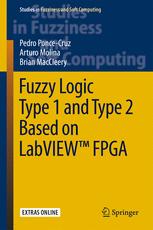

Most ebook files are in PDF format, so you can easily read them using various software such as Foxit Reader or directly on the Google Chrome browser.
Some ebook files are released by publishers in other formats such as .awz, .mobi, .epub, .fb2, etc. You may need to install specific software to read these formats on mobile/PC, such as Calibre.
Please read the tutorial at this link: https://ebookbell.com/faq
We offer FREE conversion to the popular formats you request; however, this may take some time. Therefore, right after payment, please email us, and we will try to provide the service as quickly as possible.
For some exceptional file formats or broken links (if any), please refrain from opening any disputes. Instead, email us first, and we will try to assist within a maximum of 6 hours.
EbookBell Team

4.0
66 reviewsThis book is a comprehensive introduction to LabVIEW FPGA™, a package allowing the programming of intelligent digital controllers in field programmable gate arrays (FPGAs) using graphical code. It shows how both potential difficulties with understanding and programming in VHDL and the consequent difficulty and slowness of implementation can be sidestepped.
The text includes a clear theoretical explanation of fuzzy logic (type 1 and type 2) with case studies that implement the theory and systematically demonstrate the implementation process. It goes on to describe basic and advanced levels of programming LabVIEW FPGA and show how implementation of fuzzy-logic control in FPGAs improves system responses.
A complete toolkit for implementing fuzzy controllers in LabVIEW FPGA has been developed with the book so that readers can generate new fuzzy controllers and deploy them immediately. Problems and their solutions allow readers to practice the techniques and to absorb the theoretical ideas as they arise.
Fuzzy Logic Type 1 and Type 2 Based on LabVIEW FPGA™, helps students studying embedded control systems to design and program those controllers more efficiently and to understand the benefits of using fuzzy logic in doing so. Researchers working with FPGAs find the text useful as an introduction to LabVIEW and as a tool helping them design embedded systems.